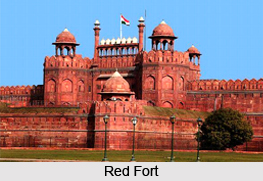 Tourism in India is rich and exuberant. From the majestic Himalayas, serenity of the coastal regions, exquisite monuments to architectural art works that makes India an ideal tourist destination. Truly this is known as incredible India.
Tourism in India is rich and exuberant. From the majestic Himalayas, serenity of the coastal regions, exquisite monuments to architectural art works that makes India an ideal tourist destination. Truly this is known as incredible India.
Scope of Tourism in India
There are different seasons undergoing changes so do the preferences of the tourists for making a visit to varied places. To beat the heat of sultry summers, people throng the cool mountains of Himalayas, while sun drenched seacoasts and wildlife sanctuaries are ideal for the winter months.
Rich Cultural Destinations in North India
Tourism in India has grown in leaps and bounds over the years, with each region of India contributing something to its splendour and exuberance. In the Northern region, the capital of India, Delhi has a plethora of cultural exploits, like Qutub Minar, Red Fort, highlighting the majesty of imperial rulers of India. Other architectural delights of modern period are the Lotus Temple, the Jantar Mantar etc. The most exquisite Taj Mahal is a wonder of the world, standing as an emblem of eternal love Also Fatehpur Sikri, Hawa Mahal catches the glimpse of the tourists both from India as well as from outside. The beauty of Thar Desert in India, ennobling the culture of its nearby cities like Jaisalmer, Jaipur, Bikaner, casts a spell of its own, thereby adding to the grandeur of Tourism in India as a whole. Also the scenic beauties of states of North India, namely, Himachal Pradesh and Jammu and Kashmir are renowned to the nature lovers and the tourists.
Tourists" Destinations in South India
 The people of South India have got an orientation towards religion and philosophy making the region an abode of temples and monuments. It has fascinating temples like Kanchipuram, Thanjavur, Tiruchirapalli, Madurai, and Rameswaram. These are sites of reverence; their exquisite architecture too is of high quality and standard. The splendid cities of Bengaluru and Mysore reveal the imperial legacy. Bangalore, the state capital is a lively cosmopolitan city noted for its fine climate and extensive gardens, thus becoming a key part of tourism in India.
The people of South India have got an orientation towards religion and philosophy making the region an abode of temples and monuments. It has fascinating temples like Kanchipuram, Thanjavur, Tiruchirapalli, Madurai, and Rameswaram. These are sites of reverence; their exquisite architecture too is of high quality and standard. The splendid cities of Bengaluru and Mysore reveal the imperial legacy. Bangalore, the state capital is a lively cosmopolitan city noted for its fine climate and extensive gardens, thus becoming a key part of tourism in India.
Tourists" Destinations in western India
Western Region is integrated in the whole of tourism in India, with its cosmopolitan culture and commercial exuberance. Mumbai, Maharashtra is a major metropolitan city and the financial capital of India. It is also the cultural capital of India; its film industry has gained acknowledgment not only in India but also in the overseas countries. Pune is another exciting town located on the Deccan Plateau, once the capital of Shivaji, the great Maratha ruler. Being the land of Shivaji and Marathas, it is not unusual that numerous artefacts are found in the periphery of the region. Aurangabad is also a city having historical significance. The magnificent Ajanta and Ellora Caves makes it a perfect place to go for vacation. Goa is a magnificent tourist destination noted for its beautiful beaches. Fascinating villages along the beach with white church buildings and beautiful houses set among orchards of coconut, alluring all the tourists to frequent the places again and again.
Tourist"s Destinations in Eastern India
The splendour of the eastern region is added mainly due to its rich cultural heritage and ethnic history. Tourism in India, thus, is growing to great heights due to metropolitan cities and the religious places amidst the wildlife of Simlipal and Sunderban Mangrove Forest like Kolkata, Bhubaneswar and Assam. Kolkata has a charm all of its own. The best time to visit the place is during the festival of Durga Puja, Kali Puja and Jagadhatri puja when the city is decorated and becomes lively with merriment and celebration. Many of Calcutta`s imperial buildings are located around the maidan, a large expanse of lawns that forms the heart of the city. With the beautiful hill stations of Darjeeling, Kurseong, Kalimpong, Ghum, Sikkim on one hand and the serenity of seacoasts of Puri on the other the tourists find no dearth in excavating the beauties and wonders of various places of eastern India.
Tourism in India is a treasure house of cultural and traditional embellishes as reflected in its artefacts, scenic beauties of the rivers, seas and mountains, thus enabling it to gain a prestige in the international arena.
Related Articles
Luxury trains of India
Sports Tourism in India
Leisure Tourism in Ladakh
Leisure Tourism in Karnataka
Leisure Tourism of Gwalior
Leisure Tourism in Gujarat
Leisure Tourism in Assam
Leisure Tourism in Punjab
 Tourism In West Bengal
Tourism In West Bengal
Leisure Tourism of Udhampur District
Tourism in Lonavala
Lavasa
Alappuzha Tourism
Forts in India
Palaces in India
Lakes in India
Tourism In Manipur
Tourism In Meghalaya
Tourism in Chennai
Maharashtra, Indian State
Beaches of India
Indian hill stations
Forestry in India
Forest Vegetation in India
Durga Puja
Island Towns in India



















